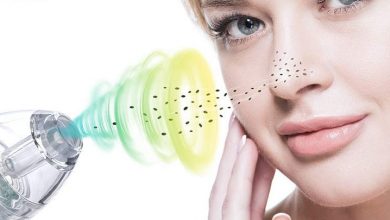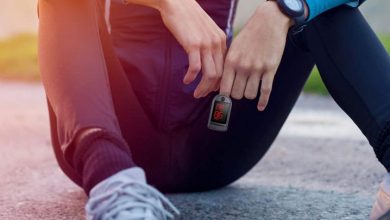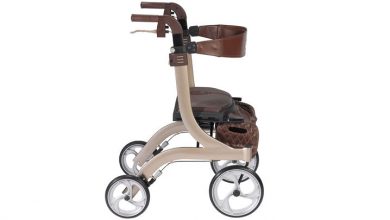
With the now widespread masks still not readily available, disposable gloves have also become useful protection against COVID-19 infection. However, to be of effective protection, it is necessary to follow some simple precautions when using and purchasing.
Then, let’s see what there is to know about gloves, the various types, and which ones are better to buy. Here is a useful guide on how to put them on and take them off correctly.
Types of disposable gloves: The materials
Although there are different types, they are disposable gloves; it is important to throw them away and use a new pair at the next opportunity.
Latex Gloves
Certainly, the most popular model: latex gloves are resistant, waterproof, and thanks to their thinness and elasticity, they leave the wearer a good sense of touch. The only drawback of latex is that it can cause sensitization and the consequent allergy, leading to chapped hands and small cuts.
For this reason, the new models of latex gloves are produced after eliminating the allergy-causing proteins. Latex gloves are sold in different colors, but this does not affect the thickness or final product’s final quality.
Nitrile Gloves
Unlike latex, a natural substance, nitrile is a chemical substance that manages to reproduce latex’s elasticity and strength. To the touch and sight, nitrile gloves are the same as latex ones.
This type of material is used in allergic subjects. Still, thanks to their characteristics, they are used in the food sector: nitrile is a suitable material for processing fatty foods.
Vinyl Gloves
Vinyl gloves are made from plastic, less resistant and less elastic than latex and nitrile gloves. Despite being classified as personal protective equipment, they cannot defend against biological risks, including COVID-19. So, don’t be tempted by their low price, as it is not enough to deal with this health emergency.
Polyethylene gloves
Polyethylene gloves are those found in the supermarket at the fruit and vegetable counter. Despite being soft, easy to wear, and cheap, they do not offer protection from biological risks.
And reusable gloves?
Classic kitchen gloves are thicker, more resistant, and reusable. Those in nitrile and neoprene have high protection for biological risk, but as we have said, it is strictly necessary that the gloves are disposed of after each use: you can use them, but you will have to use other gloves when you have to wear them.
Disposable glove: which model to choose?
In the meantime, we have shown you the different materials with which the gloves are produced, but to defend against biological attacks, the gloves must have some words on the packaging. Let’s see which ones.
Personal protective equipment: Cat.1 and Cat.3
By personal protective equipment, we mean all those precautions that protect the person from any risks caused by the performance of certain activities: obviously, PPE is designed for workers at risk, such as healthcare personnel, personnel in the industry, and the food sector. But now they can also serve to defend against contagion.
Many gloves fall within the category 1 device, i.e., minimal risk: they protect against any injury or contact with mildly aggressive cleaning substances or prolonged contact with water. These gloves cannot protect against biological risks, bacteria, fungi, or viruses.
For this reason, it is necessary to opt for category 3 devices, the most well-known life-saving devices, because they are useful for protecting against deadly risks, such as radiation, biological agents, dangerous substances, and much more. In particular, this category includes all those gloves called EN ISO 347-5: 2016 VIRUS: only these can protect the person from any contact with bacteria and viruses.
Size guide
Apart from the choice of material and safety category, it is also necessary to choose the right size: avoiding gloves that are too large for your size is important. They could let in harmful substances if they do not adhere well to the skin.
Otherwise, that is to say, too tight, they would risk breaking immediately. A small size corresponds to a hand length between 5.7 and 6.4 inches, while a large size covers up to 7.8 inches.
Do gloves serve to defend against COVID-19?
A bit like masks, it is good to know that gloves, as perfect allies against the COVID-19 virus, can become real vehicles of infection if some precautions are not adopted. It is good to remember that gloves do not replace hand washing once worn. It is necessary to avoid touching the face’s sensitive parts, such as the eyes, nose, and mouth.
The same goes for your cell phone or other commonly used things: if you are standing in line at the supermarket with gloves on to avoid touching the trolley, you should avoid texting with your cell phone or answering the phone by bringing your hand close to your mouth. It has just been placed on the trolley!
Disposable gloves: How to wear them the right way
First, check that you have purchased the right size gloves. It is important to wash your hands before use, and once inserted, it is good to check that there are no breaks on the surface and that they adhere well to the hands.
Disposable gloves: How to take them off
The most delicate part is this: taking off your gloves. Paying attention to this operation is necessary to avoid coming into contact with the glove’s outer surface. Then grab the glove by the end, wrap it around the wrist, and take it off in reverse so that the dirty part remains inside.
>>> Where to buy disposable gloves?
In this period, these products have very variable availability. We recommend that you look at Amazon, which has real-time availability of many models from multiple vendors. Here is a selection of the gloves of the moment:



